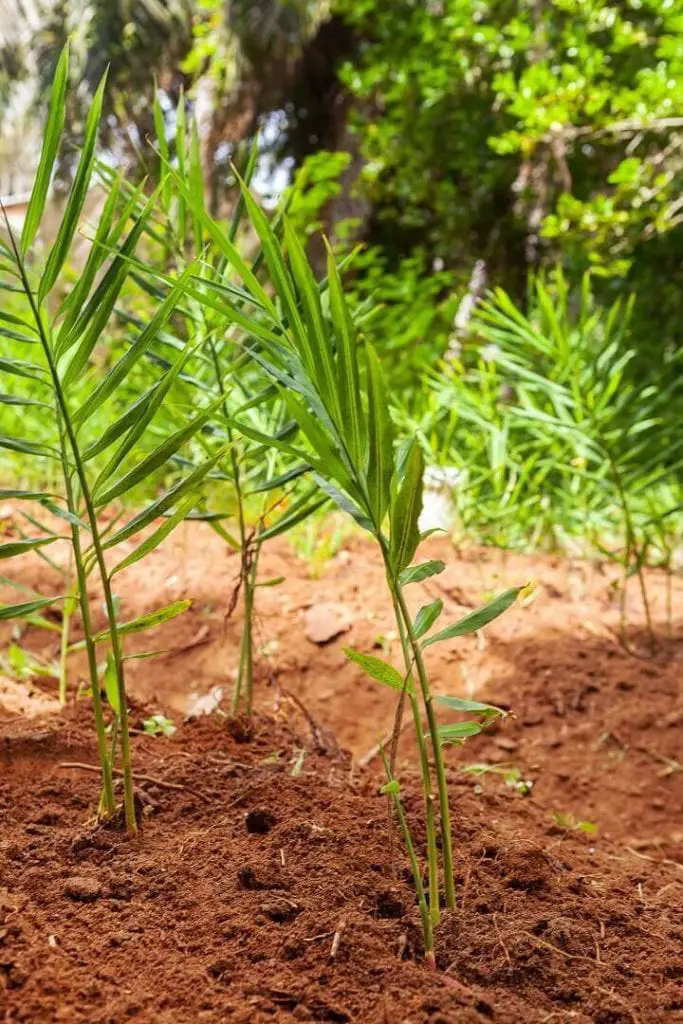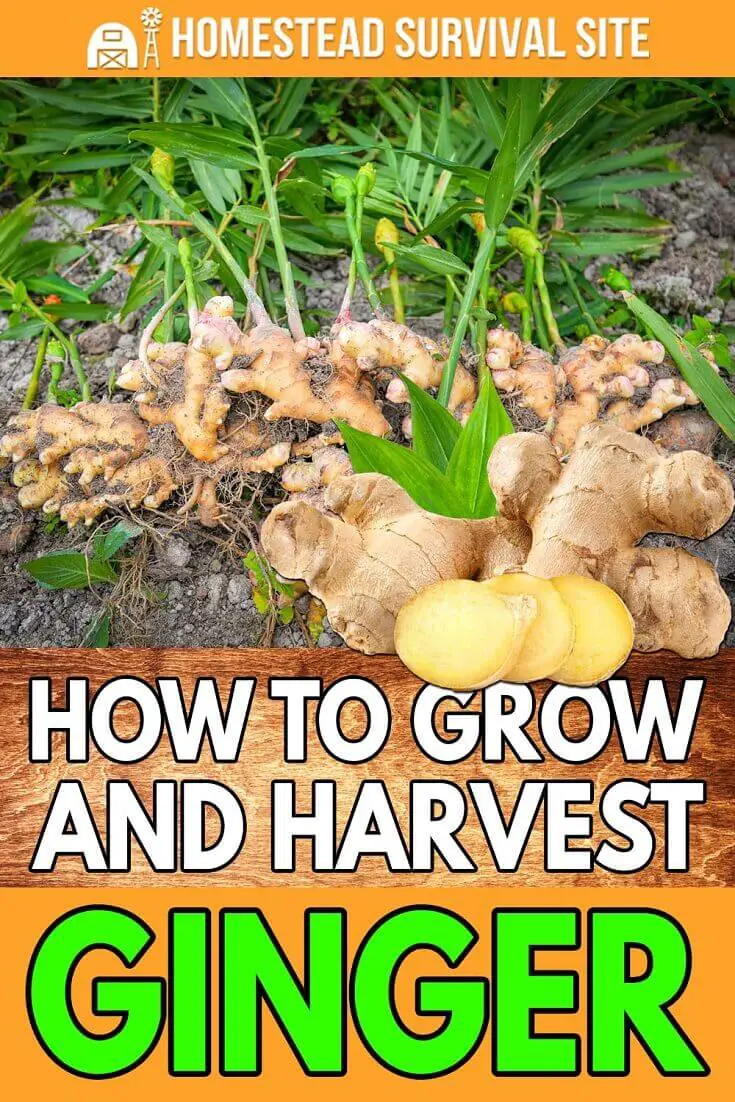Disclaimer: I am not a medical doctor and nothing in this article should be taken as medical advice. Please talk to your doctor before using any of the herbs and/or remedies mentioned in this article.
Estimated reading time: 6 minutes
Ginger is one of those spices that is unique in its flavor and many uses. It has many different benefits and is great for treating nausea, morning sickness, or car sickness. Ginger is also anti-inflammatory, making it a desired plant to have when working towards a self-sustaining homestead. Ginger also has digestive benefits and is overall a great addition to a healthy diet.
While you may see ginger root in your local grocery store, it is also easy to grow right in your own backyard. Ginger is native to tropical regions, so it requires a little extra care to help it grow well in most of the United States. Learn more about how to grow and harvest ginger with these tips.
Want to save this post for later? Click Here to Pin It On Pinterest!
How To Grow Ginger
While ginger is relatively easy to grow, there are some things to keep in mind for a successful harvest.
Know Your Growing Zone
Homesteaders living in USDA Hardiness Zone 9 or above may grow ginger year-round in the garden. These hot and humid locations include Florida, Hawaii, and the Southern regions of Louisiana, Texas, Arizona, and California. For everyone else with a lower growing zone, you’ll need to take special precautions to keep the ginger from going dormant in cooler weather.
Growing Ginger in Containers
Most homesteaders should plant ginger in a pot so that it is easy to move indoors when the seasons change. Ginger root likes to spread out, so a wide shallow container works well. Simply fill the pot with high-quality potting soil and place the entire ginger root horizontally into the soil. Cover with an inch of soil and then water to activate the growing cycle of the root.
Purchase the Ginger Root
You’ll need to purchase some ginger root, technically called a rhizome, to begin planting it. You can purchase ginger root in stores or order them from online retailers who may have a larger selection of different ginger varieties.
Look for larger pieces of ginger root that have multiple fingers, or knobs, extending from it. When selecting your own ginger root, look for “eyes” on the root, which are small white growths at the end of the fingers, which is where the new growth will sprout from.

Choose Your Location
For those homesteaders in the hot regions listed above, all you will need is a spot in the garden that receives plenty of sunlight and some access to shade in the afternoons. Ginger is best grown in rich and loamy soil conditions. Well-draining soil is also an essential part of growing ginger so that the root doesn’t form rot.
Watering and Soil Conditions
Ginger root needs more water when it is first planted. However, when the shoots begin to form and the plant is growing, ginger requires less water. Make sure that the loose soil is damp but not soaking, as the root is prone to rotting.
The soil should be quick to drain to keep the plant watered but not overly wet. Remember that it is easy for container plants to get over-saturated, so keep an eye on soil conditions as the plant grows.
Different Planting Techniques
Some homesteaders choose to cut apart their ginger root into smaller pieces before planting. However, if you want to see fast growth with a lot of shoots, it is better to plant the entire root and then divide the plant later on.
Another planting technique is to pre-sprout or soak the ginger root before planting. Soaking the root in a bowl of water will activate the growing cycle, and small shoots will start to appear. However, the same will happen when planted, so skipping this step can save some time.
Watch Outside Temperatures
One of the main reasons to grow ginger in a container is to make it easy to move around when the temperatures drop. If the outside temperature drops below 55°F, the plant will begin to go dormant.
To keep ginger growing year-round, move the plant into a warmer part of the house or greenhouse to keep it in hot and humid conditions. Even in warmer climates, an unusual drop in temperatures could kick the root into dormancy for the winter.
How to Harvest Ginger
Getting ginger from the farm to the table is easy and can result in even more ginger plants on the homestead.
Transplanting Ginger
It is possible to grow ginger outdoors, even if you live in a cooler climate. It is crucial to watch temperatures and dig up the ginger plants to move indoors before they go dormant. If a plant has outgrown its container, it is also possible to transplant the plant by digging up and dividing the rhizome into different parts.
To successfully transplant the rhizome, it is vital to take enough of it to support the growing plant. Cut the rhizome at least 2 inches from where the stalk meets the root. Plant the piece of root in a new container so that it can continue to grow.
If the rhizome has a large plant attached to it, you can pull the rhizome away from the plant and root system as well. This allows you to use the rhizome and then also replant the rooted stems back into the soil to create even more ginger.
Harvesting Ginger
One of the best things about growing ginger is that you can harvest it as you need it. There isn’t a certain amount of time after planting when the ginger root is ready to harvest. Allowing the root and plant to grow will create more ginger, but harvesting the root as you need it is common.
It is possible to cut away pieces of the rhizome for use in the kitchen without hurting the rest of the plant. Using a sharp knife, cut away a part of the rhizome so that the remaining plant can have at least 2-3 inches of root per stalk.
You can also dig up the entire rhizome and harvest it for immediate use as well. Cut away the plant, rinse off the root, and start using ginger in your everyday dishes for a spicy flavor that is also quite healthy.
While growing ginger can be a bit tricky in cooler climates, it is easy to do with the use of containers and a sharp eye on outdoor temperatures. Ginger is a great addition to the homestead both for its taste as well as medicinal qualities.
Like this post? Don't Forget to Pin It on Pinterest!












